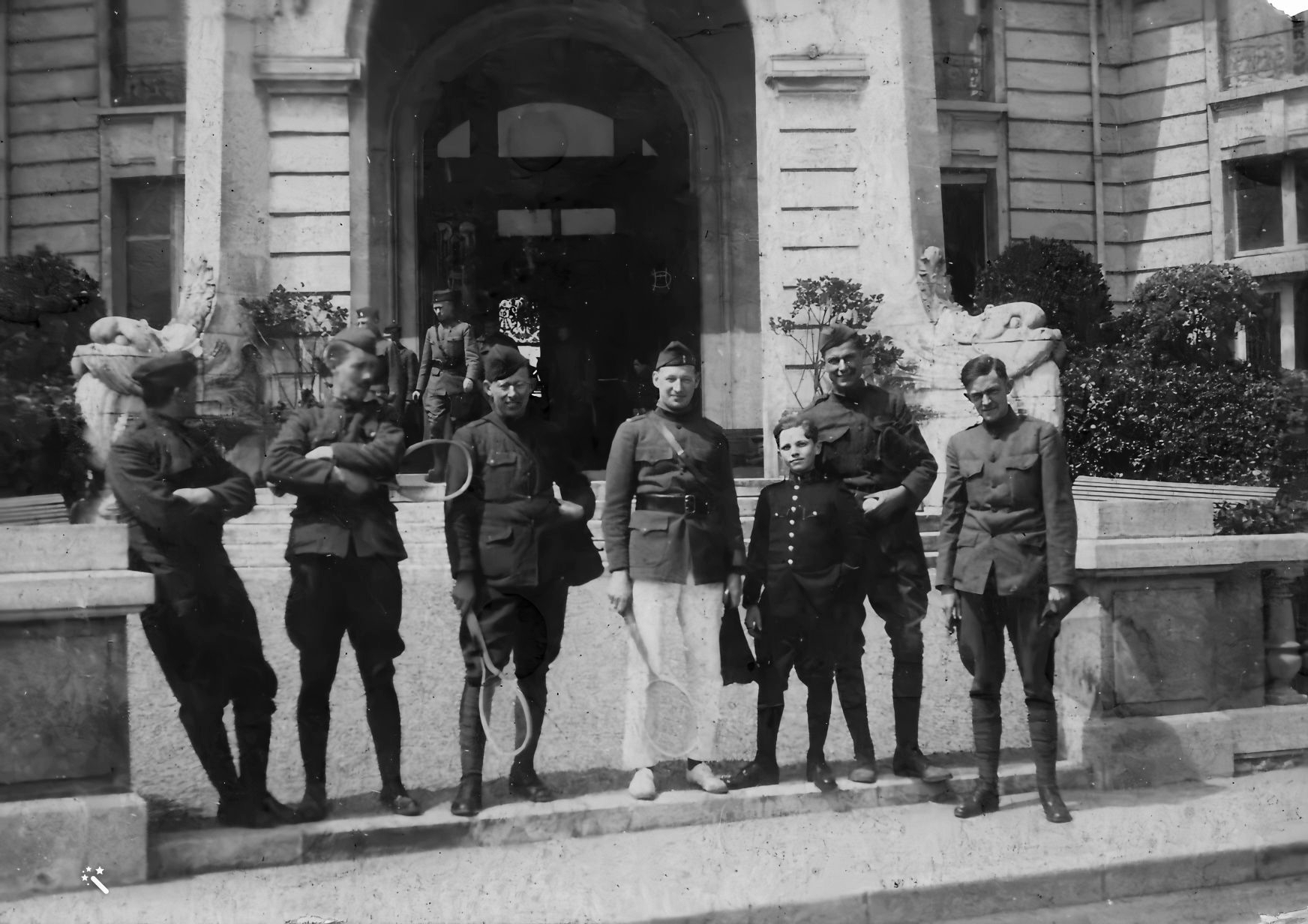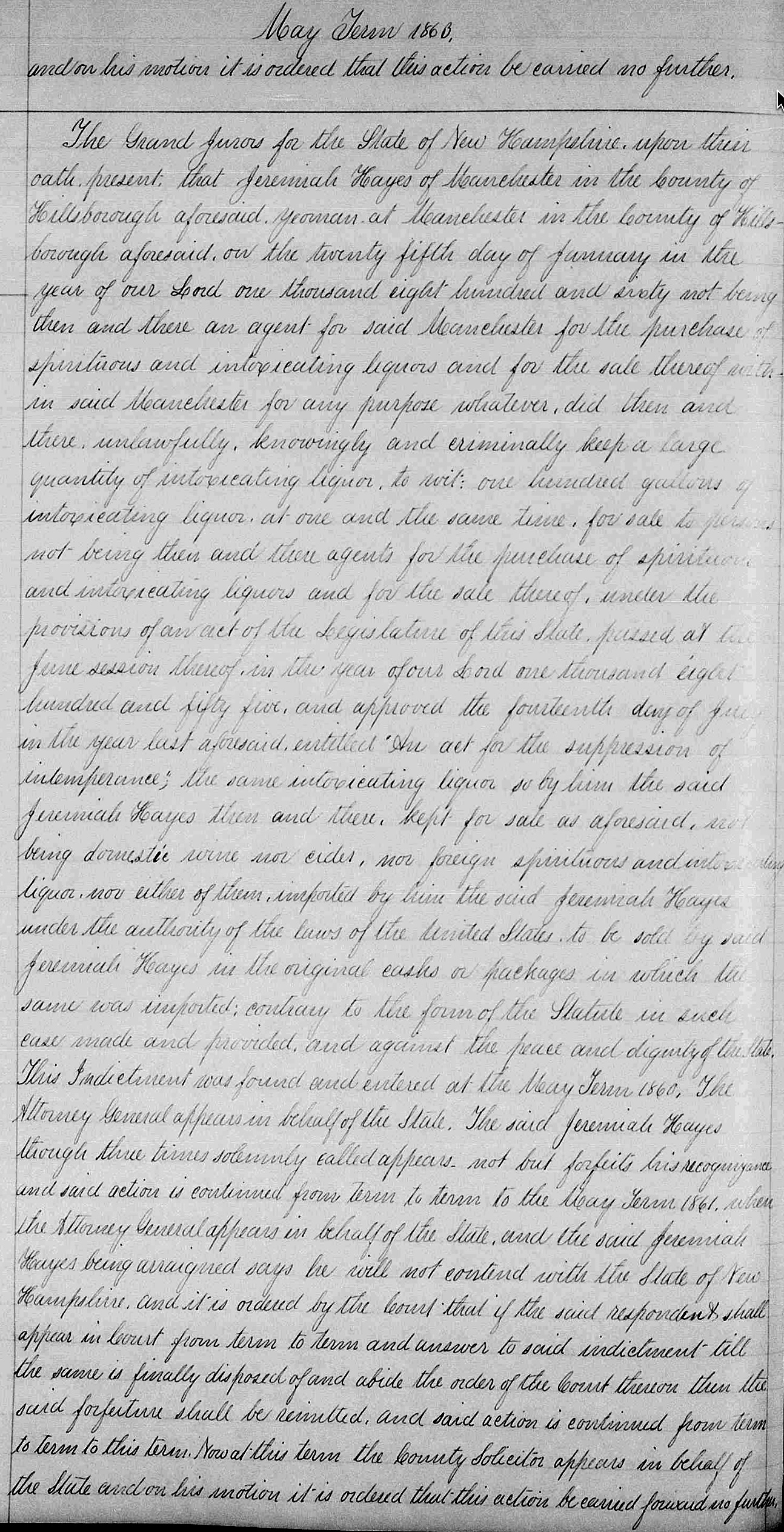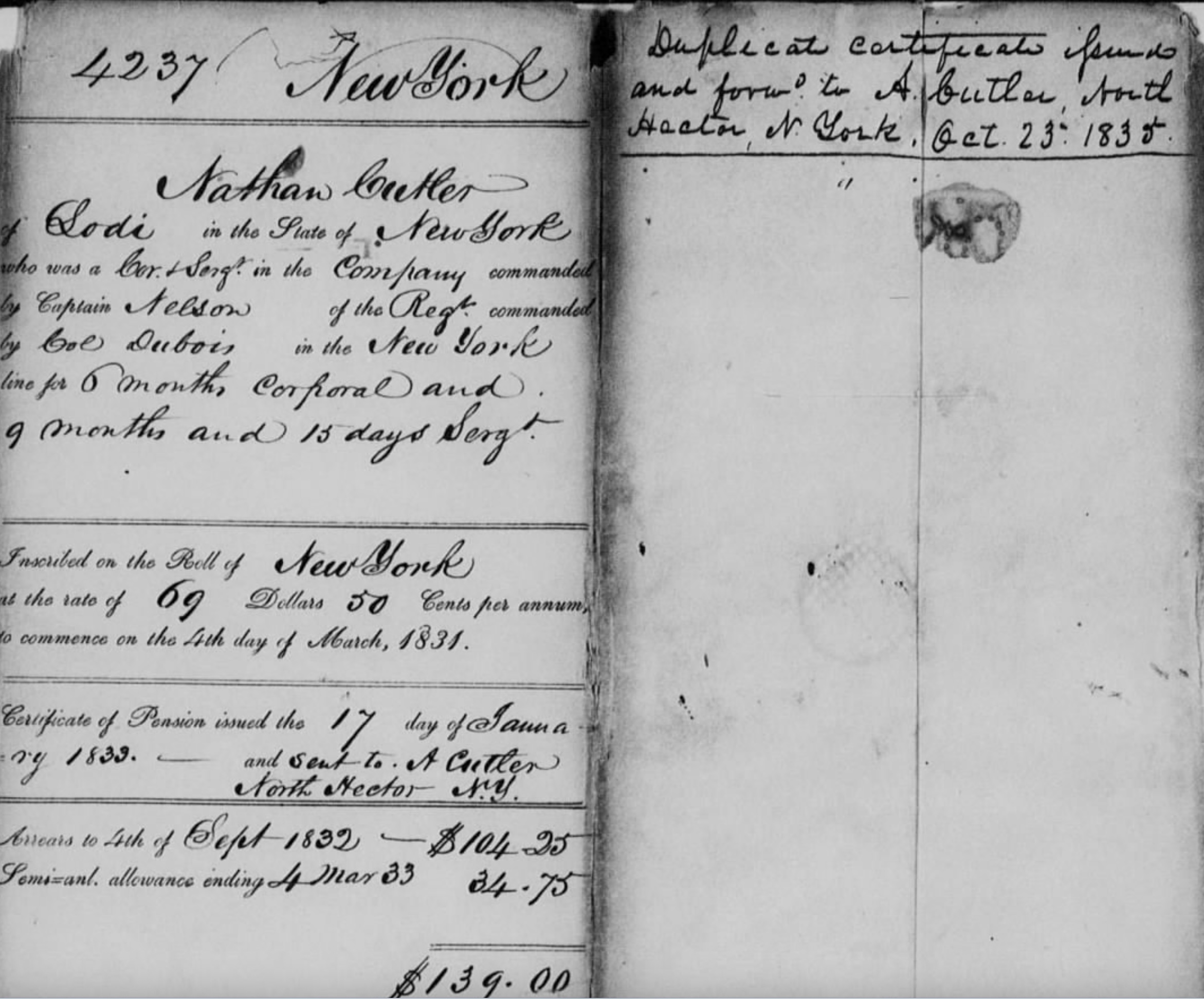The Hayes Family HO Scale Train Set
HO Scale Train Set made primarily by John Hayes, but with assistance from his three sons at various times.
Harry W. Lewis — From Soldier to Sportsman in the AEF, 1918–1919
By Philip HayesPublished On: August 24th, 2025Categories: Event: World War I, Military, Surname: LewisEarly Life and Call to Service Harry William Lewis was born in Brooklyn, New York on November 18, 1892. Like so many young men of his generation, his life was dramatically altered by the outbreak of the First World War. In April 1918, at the age of twenty-five, Harry was inducted into the U.S. Army.
State of New Hampshire vs. Jermiah Hayes, May 1860
The following is a court indictment from New Hampshire dated May Term 1860 against Jeremiah Hayes of Manchester, Hillsborough County. Hayes was accused of illegally keeping and selling a large quantity of intoxicating liquors (about 100 gallons)without being authorized as an agent under state law. The law in question was the 1855 Act for the
The Challenges of Tracing the Parentage of Nathaniel Cutler (b. 1808): A Case Study in Genealogical Pitfalls
The search for the true parentage of Nathaniel Cutler, born in 1808 in Westchester County, New York, highlights the difficulties faced when researchers rely too heavily on compiled genealogies and derivative sources. Over the past two days, close examination of both 19th- and early 20th-century genealogical works has revealed a troubling pattern of duplication, speculation,
“Born at Peekskill”: Nathan Cutler’s Road to a Revolutionary War Pension
In the late summer of 1832, nearly fifty years after he first hauled barracks timber on the Hudson, Nathan Cutler of Lodi, Seneca County, New York appeared before Judge Levi Whedon to claim a pension under the Act of June 7, 1832. He was about seventy-four. His memory, he admitted, was “worn by old age,”
A Hudson River Soldier Speaks—Quotes from Nathan Cutler’s 1832 Declaration
Here are firsthand voices from our Nathan Cutler’s Revolutionary War pension file (S12642)—his own 1832 sworn declaration, plus affidavits from his brother-in-law Isaac Travis, his probable son Abraham Cutler, and neighbors and clergy in Seneca County. Together they place Nathan as born at Peekskill in 1758, serving along the Hudson Highlands(Fishkill, Fort Montgomery, Peekskill, West
Nathan Cutler (b. 1758, Peekskill, NY) — Militia service along the Hudson, 1775–1780
The following summarizes Nathan Cutler’s own words in his request for a U.S. pension as recorded in pension file S12643. When the Revolution broke out, Nathan was living in the Nine Partners tract of Dutchess County. In October 1775 he answered an early call-up under Captain Isaac Bloom and spent about six weeks hauling lumber
Mail Steamer at the Crossroads of War
Henry Lewis, the Nashville, the First Naval Shot, and the Opening of the Civil War In the spring of 1861, the U.S. Mail Steamer Nashville was exactly what her name and registry claimed her to be — a civilian “packet” steamer, meaning a privately owned vessel that ran on a fixed schedule under contract to
Of Fire and Killarney: The Story Behind the Hayes Name
My name is Philip Hayes. I was born in the United States, as was my father—but according to the deep dive I’ve taken into our genealogy, we are unmistakably, undeniably, 100% Irish up to my father. My father is a third-generation American, yet the Hayes line remained pure up to him. Our family roots trace










